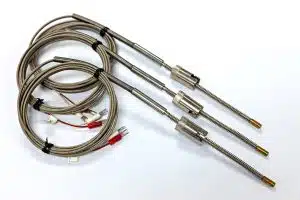Most engineers involved with temperature measurement know there are several methods for measuring temperatures of fluids and solids. The oldest and most common method for measuring the temperature of a fluid such as air is the standard mercury-in-glass thermometer. However, this is not acceptable for measuring surface temperatures of solid objects. For surface temperature … [Read more...]
Augmenting Development of Electronics Cooling Technologies with Machine Learning Tools – a Heat Pipe System Example
The traditional pathway for development of thermal management technologies for electronics has been to analyze using heat transfer theory augmented by computational tools such as finite difference or finite element methods, CFD tools, or thermal management system simulation tools, sometimes in tandem with prototype system fabrication and testing. Combining recently available … [Read more...]
Design Considerations for Chip/Package Level Bare Die Impingement Cooling for High Performance Computation Systems
Introduction of Bare-Die Jet Cooling in Package With the rising demand for more powerful, efficient, high-performance computation (HPC) systems, power densities of devices have increased dramatically. To cope with the increasing heat flux challenge for future data center servers beyond 1 kW/cm2, efficient liquid cooling solutions are needed to address those thermal … [Read more...]
The Applicability of JESD51-14 for the Determination of Junction to Case Thermal Resistance
Rjc (or sometimes ThetaJC, θjc, Rth_jc), the so-called ‘junction to case’ thermal resistance, is a thermal metric that enables comparison of the thermal performance of packaged semiconductor devices from differing suppliers. The JEDEC standard JESD51-14 [1] documents a method for the experimental determination of Rjc. Although applicable for packages that exhibit a … [Read more...]
Tech Brief: Effect of Thermocouple Size
Thermocouples are widely used for temperature measurements. They are particularly useful in lab testing, due to their relatively low cost and the ability to easily fabricate thermocouples of specific lengths for a given test. This Tech Brief discusses issues related to the size of a thermocouple that may be considered when using them. A thermocouple consists of two wires made … [Read more...]
- 1
- 2
- 3
- …
- 43
- Next Page »










